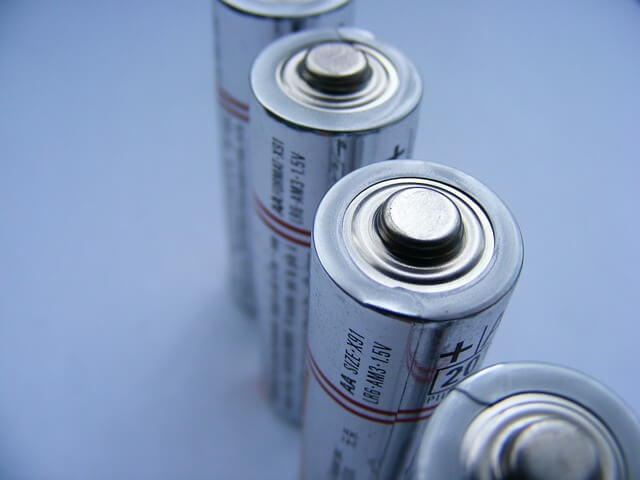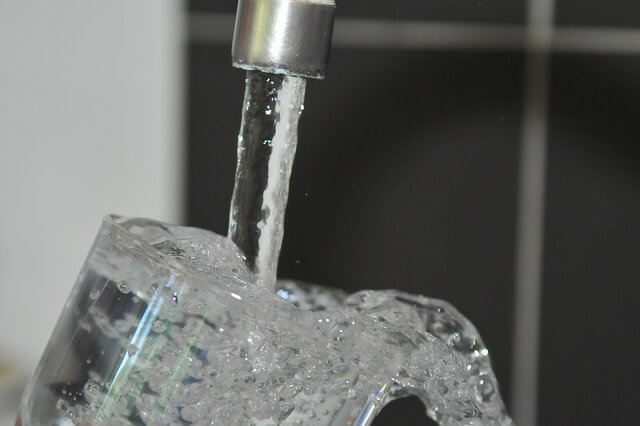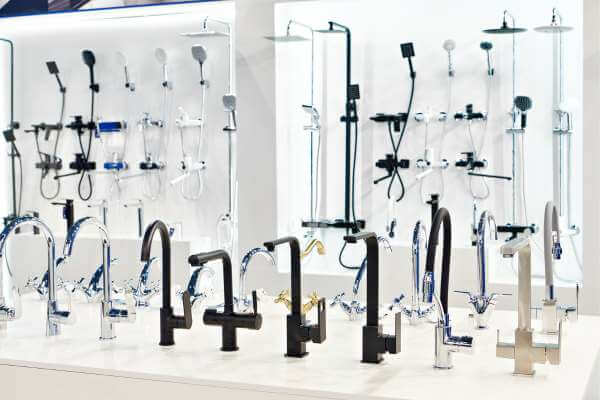Sensor faucets are a convenient and hygienic option for any bathroom or kitchen. However, when they malfunction, it can be frustrating and wasteful. One common issue is when the faucet won’t stop running, even when no one is using it. This can lead to water waste and higher utility bills.
If you are experiencing this issue, there are several possible causes. It could be due to a malfunctioning sensor, a faulty solenoid valve, or even a clogged aerator. Troubleshooting the problem can be time-consuming and require some technical knowledge, but it is worth it to save water and money. In this article, I will provide some tips and solutions for fixing a sensor faucet that won’t stop running.
Understanding Sensor Faucets
As someone who has installed and repaired many sensor faucets, I can tell you that these devices are a great example of advanced technology in plumbing. Sensor faucets, also known as touchless faucets, use a motion sensor to detect the presence of a hand or object beneath the spout. This sensor triggers the flow of water, and the faucet automatically shuts off after a set period.
Sensor Faucets
One of the primary benefits of sensor faucets is that they help reduce water waste. Since the faucet only runs when someone is using it, there is less water being wasted when the sink is not in use. Additionally, touchless faucets can help reduce the spread of germs in public restrooms since users don’t have to touch the faucet handle to turn the water on and off.
When it comes to mounting, sensor faucets can be mounted on a sink or countertop just like traditional faucets. However, they do require a power source to operate, either through batteries or an electrical outlet. If the battery is drained out, the sensor may not work properly. In such cases, it is important to replace the battery or recharge it.
Despite their benefits, sensor faucets can sometimes malfunction and require troubleshooting. In such cases, it is important to identify the cause of the problem. For example, if the sensor eye is blocked by debris, the faucet may not trigger. In such cases, it is important to remove the debris and clean the sensor eye. If the faucet won’t stop running, it could need a good cleaning or new battery. Conduct some motion sensor faucet troubleshooting to narrow down what you need to do to get the faucet working correctly again.
Overall, sensor faucets are a great addition to any home or commercial space. They offer convenience, reduce water waste, and promote better hygiene. However, it is important to understand how they work and how to troubleshoot them when necessary.
Common Issues with Sensor Faucets
Sensor faucets are a great addition to any modern kitchen or bathroom. They offer convenience, hygiene, and water savings. However, they can also be a source of frustration when they malfunction. In this section, I will discuss some of the common issues that you may encounter with sensor faucets and how to troubleshoot them.
Water Flow Issues
One of the most common issues with sensor faucets is the water flow. Sometimes, the faucet may not turn on when you place your hands under the sensor, or it may turn on but only produce a weak stream of water. This can be caused by several factors, including a clogged or dirty sensor, debris in the water lines, or a low battery.
To troubleshoot this issue, start by cleaning the sensor and checking for any debris or blockages in the water lines. If the problem persists, replace the battery and see if that improves the water flow. If none of these solutions work, you may need to call a professional plumber to diagnose and fix the problem.
Leaking Faucets
Another common issue with sensor faucets is leaking. If you notice water dripping from the faucet when it is turned off, this could be a sign of a leaking sensor or valve. Leaks can also occur if the faucet is not properly installed or if the water pressure is too high.
To fix a leaking sensor or valve, you may need to replace the faulty parts. If the faucet is not properly installed, you may need to tighten the connections or adjust the water pressure to prevent leaks.
Low Battery
A low battery can cause several issues with sensor faucets, including weak water flow, inconsistent sensor performance, or a faucet that won’t turn off. To prevent these issues, it is important to replace the battery regularly, according to the manufacturer’s instructions.
If you are experiencing issues with your sensor faucet, start by checking the battery level and replacing it if necessary. If the problem persists, try cleaning the sensor and checking for any debris or blockages in the water lines. When none of these solutions work, you may need to call a professional plumber to diagnose and fix the problem.
In summary, sensor faucets are a great addition to any modern kitchen or bathroom, but they can also be a source of frustration when they malfunction. By understanding the common issues and how to troubleshoot them, you can keep your sensor faucet working properly and enjoy the benefits it provides.
Sensor Faucet Brands
When it comes to sensor faucets, there are a variety of brands available in the market. As an expert in this field, I have worked with different brands and can confidently say that some brands stand out from the rest. Here are some of the top sensor faucet brands in the market:
Moen
Moen is a popular brand known for its high-quality sensor faucets. Their MotionSense technology allows for hands-free operation and is available in both kitchen and bathroom faucets. Moen faucets are easy to install and come with a limited lifetime warranty, which gives users peace of mind knowing that their faucet is covered in case of any defects.
Delta
Delta is another brand that offers top-of-the-line sensor faucets. Their Touch2O technology allows users to turn on the faucet with a simple touch, making it easy to use for people of all ages. Delta faucets are also easy to install and come with a limited lifetime warranty, which ensures that the faucet will last for years to come.
Sloan Automatic Faucet
Sloan is a leading brand in the automatic faucet industry. Their faucets are designed to conserve water and energy, making them an eco-friendly option for households. Sloan faucets are also easy to install and come with a 3-year warranty, which guarantees that the faucet will work properly.
Sloan Sensor Faucet
Sloan’s Sensor faucets are another popular option in the market. Their sensor technology ensures that the faucet turns on and off automatically, making it a hygienic option for homes and commercial spaces. Sloan sensor faucets are easy to install and come with a 3-year warranty, which gives users peace of mind knowing that their faucet is covered in case of any defects.
Moen MotionSense Faucet
Moen’s MotionSense faucets are another great option for hands-free operation. The technology allows users to turn on the faucet with a wave of their hand, making it easy to use for people of all ages. Moen MotionSense faucets are easy to install and come with a limited lifetime warranty, which guarantees that the faucet will last for years to come.
Overall, these brands offer top-quality sensor faucets that are easy to install and come with a warranty. Whether you are looking for a kitchen or bathroom faucet, these brands have a variety of options to choose from.
Troubleshooting Sensor Faucets
Sensor faucets are a convenient and hygienic option for many homes and businesses. However, they can sometimes malfunction and cause frustration. If your sensor faucet won’t stop running, there are a few troubleshooting steps you can take to fix the issue.
First, check the battery. Many sensor faucets are powered by batteries, and if the battery is low or dead, the faucet may not function properly. Replace the battery with a fresh one and see if this resolves the issue.

If the battery is not the problem, check the solenoid valve. The solenoid valve controls the flow of water in the faucet, and if it is clogged or damaged, it can cause the faucet to run continuously. Clean or replace the solenoid valve as needed.
Another potential issue is a dirty diaphragm valve. The diaphragm controls the flow of water in the faucet, and if it is dirty or clogged, it can cause the faucet to malfunction. Clean or replace the diaphragm as needed.
If none of these steps resolves the issue, check the connections. Loose or damaged connections can cause the faucet to malfunction. Tighten or replace any loose or damaged connections as needed.
In some cases, a manual override may be necessary to stop the faucet from running. Consult the faucet’s manual or contact the manufacturer for instructions on how to perform a manual override.
Overall, troubleshooting a sensor faucet that won’t stop running can be a simple process. By checking the battery, solenoid valve, diaphragm, connections, and performing a manual override if necessary, you can quickly fix the issue and enjoy the convenience of your sensor faucet once again.
Maintenance and Repair
In most cases, the problem is caused by a malfunctioning solenoid or a dirty diaphragm. Here are some tips on how to maintain and repair your sensor faucet.
Maintenance
Regular maintenance is essential to keep your sensor faucet working correctly. Here are some maintenance tips:
- Check the battery compartment regularly. If the battery is low, replace it with a new one.
- Clean the screen regularly to remove any dirt or debris that may clog it.
- Check the control box for any loose connections or damaged wires.
Repair
If your sensor faucet won’t stop running, you may need to replace the solenoid or clean the diaphragm. Here are some repair tips:
- Disassemble the faucet to access the solenoid. Check the solenoid for any damage or wear and tear. If the solenoid is faulty, replace it with a new one.
- If the solenoid is okay, check the diaphragm for any dirt or debris. Clean the diaphragm thoroughly and reassemble the faucet.
In conclusion, regular maintenance and timely repair can help keep your sensor faucet working correctly. If you are not confident in your ability to repair the faucet, it is best to call a professional plumber.
Power and Battery Issues
As I troubleshoot my sensor faucet that won’t stop running, I realize that one of the common problems with touchless faucets is power and battery issues. Here are some things to check if your sensor faucet won’t stop running:
Battery
The first thing to check is the battery. If the battery is low or dead, the sensor faucet won’t work properly. Make sure the battery is properly installed and has enough power. Check the manufacturer’s instructions for the correct battery type and voltage. If the battery is low, replace it with a new one.
Power Consumption
Another issue that can cause a sensor faucet to malfunction is excessive power consumption. If the faucet is using too much power, it can drain the battery quickly and cause the faucet to stop working. Check the manufacturer’s instructions for the recommended power consumption and make sure the faucet is not using more power than it should.
Voltage
If the voltage in your circuit is not flowing through the wires of the touchless faucet perfectly, the sensor may not work properly. Check the voltage to make sure it is within the range specified by the manufacturer. If the voltage is too low or too high, it can cause the faucet to malfunction.
Rechargeable Batteries
If your sensor faucet uses rechargeable batteries, make sure they are fully charged. If the batteries are not charged properly, the sensor may not work properly. Follow the manufacturer’s instructions for charging the batteries and make sure they are fully charged before using the faucet.
Low Battery Indicator
Some sensor faucets have a low battery indicator that will alert you when the battery is low. If your faucet has this feature, make sure to replace the battery as soon as possible to avoid any malfunctions.
By checking the battery, power consumption, voltage, and rechargeable batteries, you can troubleshoot power and battery issues with your sensor faucet.
Cleaning and Unclogging

If your sensor faucet won’t stop running, it could be due to clogs or blockages. Cleaning and unclogging your faucet can be an easy fix. Here are some steps to follow:
- Turn off the water supply to the faucet.
- Remove the spout from the faucet and check for any clogs or blockages. Use a small brush or toothbrush to remove any debris.
- Check the aerator for any clogs or blockages. The aerator is the small piece at the end of the spout that mixes air with water. Unscrew the aerator and use a small brush or toothbrush to clean any debris. If the aerator is damaged, replace it.
- Soak the aerator and spout in vinegar overnight to dissolve any mineral buildup. Rinse them thoroughly with water before reattaching them to the faucet.
- Check the sensor eye for any debris or adhesive label. The sensor eye is usually located at the base of or on top of the faucet spout. Remove any debris or adhesive label covering the eye.
Cleaning and unclogging your sensor faucet can be an easy fix to stop it from running continuously. By following these steps, you can ensure that your faucet is free from any clogs or blockages.
Technical Components of Sensor Faucets
As someone who has installed and maintained sensor faucets, I can tell you that these devices are made up of several technical components that work together to ensure the faucet functions properly. Here are some of the key components of a sensor faucet:
- Solenoid valve: This is the valve that controls the flow of water in the faucet. It is powered by a battery and is activated by the sensor eye.
- Diaphragm: The diaphragm is a rubber membrane that helps regulate water flow. It is located inside the solenoid valve.
- Valves: Sensor faucets typically have two valves. One is the solenoid valve, which controls the flow of water. The other is a mixing valve, which regulates the temperature of the water.
- Components: In addition to the solenoid valve and mixing valve, sensor faucets also have several other components, including a sensor eye, infrared sensor, and faucet handles.
- Sensor eye: The sensor eye is the part of the faucet that detects motion and activates the solenoid valve.
- Infrared sensor: This is the technology that allows the sensor eye to detect motion. It works by emitting a beam of infrared light and measuring the reflection off of nearby objects.
- Water pressure: The water pressure in the pipes can also affect the function of a sensor faucet. If the pressure is too low, the faucet may not turn on at all. If it is too high, the water may come out too forcefully.
Overall, understanding the technical components of a sensor faucet is important for troubleshooting any issues that may arise. By knowing how each component works, you can quickly identify the source of the problem and take the appropriate steps to fix it.
Convenience and Efficiency of Sensor Faucets
As someone who has used sensor faucets for a while, I can confidently say that they are incredibly convenient and efficient. Here are a few reasons why:
- Touchless operation: One of the biggest advantages of sensor faucets is that they are touchless. This means that you don’t have to touch the faucet handle to turn it on or off. This is especially useful when your hands are dirty or when you want to avoid spreading germs.
- LED light indicators: Many sensor faucets come with LED light indicators that change color to indicate the water temperature. This is especially useful when you want to avoid scalding yourself with hot water.
- Water conservation: Sensor faucets are designed to conserve water. They only turn on when they detect motion, and they automatically shut off after a few seconds of inactivity. This means that you don’t have to worry about leaving the faucet running and wasting water.
- Ease of installation: Sensor faucets are easy to install and don’t require any special tools or skills. Most of them come with detailed instructions that you can follow to install them yourself.
Overall, sensor faucets are a great addition to any home or business. They are convenient, efficient, and easy to use. If you’re looking for a way to save water and improve hygiene, then a sensor faucet is definitely worth considering.
FAQ
How do I stop my sensor tap from running?
To resolve the issue of continuous water flow in a sensor faucet, follow these steps:
- Remove or disconnect the power supply, whether it’s the battery or mains connection.
- Wait for about 5 minutes, allowing the sensor to reset itself during this time.
- Reconnect the power supply to the faucet, ensuring that the correct polarity (Negative and Positive) is observed.
- By doing this, the sensor should reset, and the problem of continuous water flow should be rectified.
Ensuring that the power connection is correctly set with the proper polarity is essential as connecting the Negative and Positive terminals in reverse could lead to malfunctioning of the sensor faucet. By following these steps and confirming the correct power connection, you should be able to resolve the issue and have your sensor faucet working correctly once again.
Why will my faucet not stop running?
Several factors can contribute to faucet issues, with the most common culprits being worn-out washers, faulty seals, loose handles, clogged aerators, and broken pipes. To pinpoint the specific problem causing your faucet issue, start by removing the handle and inspecting for any signs of wear or damage. If everything appears intact and undamaged, the root cause of the problem may lie elsewhere, requiring further investigation.
Why is the water still running after turning off the valve?
If you are experiencing issues with the hot water valve in your faucet, it could be due to a defective valve or a worn-out rubber washer inside. To address this, turn off the main water supply to your house and proceed to rebuild or replace the valve as needed. The good news is that replacing the valve is a simpler task than you might think, making it a manageable fix to resolve the problem.


 Hi, my name is Debra Klein and I love modern kitchen designs! As a product reviewer, it’s my mission to help homeowners choose the right modern kitchen accessories for their homes. I want to give them the best solution possible so they can make the best decision for their needs. Thanks for reading!
Hi, my name is Debra Klein and I love modern kitchen designs! As a product reviewer, it’s my mission to help homeowners choose the right modern kitchen accessories for their homes. I want to give them the best solution possible so they can make the best decision for their needs. Thanks for reading!




